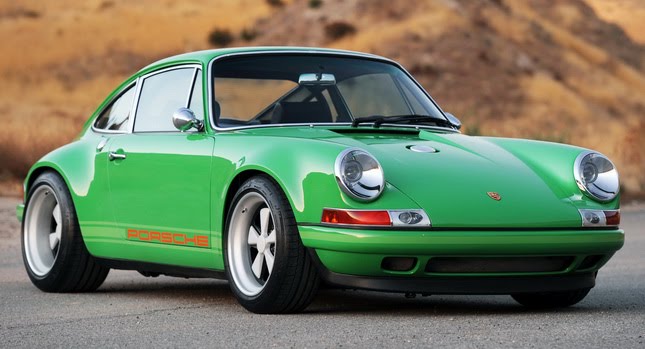In 1998, the last of the air-cooled Porsche 911s rolled off the production line at Stuttgart, soon to be replaced with a newer, more modern water-cooled variant of the classic rear-engined sports coupe. Fortunately, for Porsche fans and company shareholders alike, the water-cooled 996 Series proved to be a venerable replacement for the air-cooled 993 and still commands impressively high prices on the second-hand vehicle market.
For some fans though, the only “true” Neunelfer is the original: the 911 Classic built from 1963 until 1989. Back in those days Porsches were lightweight, rear-engined and – most importantly – air-cooled. By the end of the ‘80s, however, outside concerns such as passenger safety, comfort and emissions regulations were – to some purists – killing the Porsche brand. Enthusiasts began demanding a purer 911 and, in 2009, L.A.’s Singer Vehicle Design responded.
 The company set itself a challenge: apply modern materials, manufacturing techniques and design as well as state-of-the-art technology to a forty-year-old car. Singer wanted to incorporate the spirit of the 911 Classic with the sharp looks of the long hood pre-‘74 race specials, the durability of the ‘80s models and the power and sophistication of the 964 / 993 Series.
The company set itself a challenge: apply modern materials, manufacturing techniques and design as well as state-of-the-art technology to a forty-year-old car. Singer wanted to incorporate the spirit of the 911 Classic with the sharp looks of the long hood pre-‘74 race specials, the durability of the ‘80s models and the power and sophistication of the 964 / 993 Series.
Here’s how they do it:
First they take a long wheelbase 911 donor car – one built between 1969 and 1989 – and strip it down to the bare shell. This leaves only the original wheelbase, A-pillar position, roofline and suspension / transaxle mounts. Singer then reinforces the unibody to improve torsional rigidity and coats the car in a “second skin” of carbon fibre. With the exception of the doors, all the 911’s sheet metal is then replaced with lightweight composites including Kevlar and carbon fibre.
MacPherson struts and a coil sprung Carrera SC rear trailing arms replace the 911 Classic’s original torsion-beam suspension setup, and multi-adjustable Smart Racing anti-roll bars and Eibach springs are added to improve ride and handling. The original ZF rack-and-pinion steering is replaced with electric-hydraulic power steering that Singer claims emulates the feel of the original on the track or open road while making the 911 a more pleasant drive around town.
The 3.6 L engine from the last of the air-cooled 911’s – the 993 – replaces the 911 Classic’s 2.0 L jobby and is massaged up to 3.82-liters with the help of Ninemeister and Jerry Woods Enterprises components and expertise. A Motec ECU that integrates launch and traction control with data logging capability rounds out the engine mods. Stopping and sticking is handled nicely by four-pot Brembo callipers / rotors and five-spoke forged aluminium Zuffenhaus wheels wrapped in 17-inch Michelins.
Singer is offering its reborn 911 with a choice of either a 360 hp (268 kW) luxury or 425 hp (317 kW) touring tune. The latter is good for 0 to 60 mph (0 to 100 km/h) in 3.9 seconds and a top speed of 170 mph (274 km/h); not bad for a forty year old car.
Singer has also beefed up the interior with lightweight sound deadening, new gauges and refurbished Recaro’s with electronic operation and premium leather. The crowning glory is a MOMO Monza steering wheel; a must-have for any classic 911. Modern conveniences such as air conditioning, Garmin satellite navigation, iPod connectivity and Bluetooth are all available as options, while HID headlamps and a speed sensitive retractable rear spoiler are included as standard.
As you’d expect for this sort of vehicle, prices are only available on enquiry. I don’t know about you, but for something that looks this good I’d sell the kids, the cat and one of my kidneys. You can check out our full gallery below and / or leave your piece in the comments section.
By Tristan Hankins
PHOTO GALLERY


























































